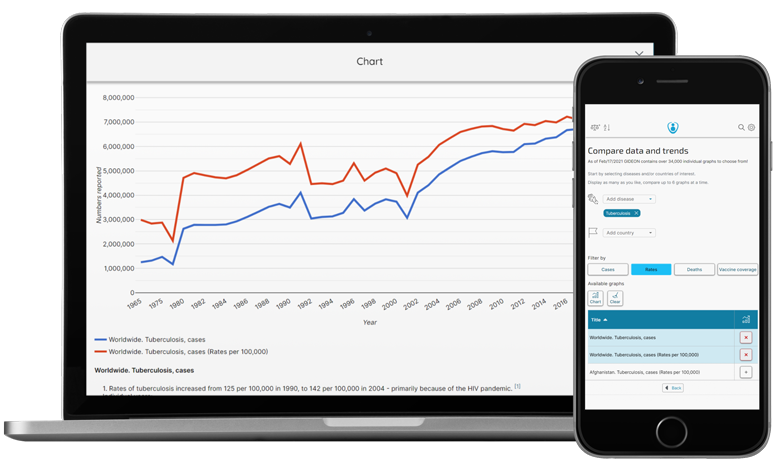If you ask a Saudi national, “What is the status of coronavirus infection in your country?”, they are likely to reply, “Which coronavirus are you referring to?” The reason for this is that the Middle East is still very much battling an outbreak of not only COVID-19 but also MERS. In this blog post, we will take you through the latest clinical evidence surrounding MERS.
What is MERS?
COVID-19 is the seventh coronavirus disease to be reported in humans. The sixth, Middle East Respiratory Syndrome (MERS) has been active since the first cases were described in Jordan in 2012. As of August 2020, a total of 2,577 cases (935 fatal) have been reported. The condition is currently endemic to seven Middle Eastern countries, with 80 percent of cases (89 percent of fatal cases) occuring in Saudi Arabia.

MERS outbreaks and distribution map, 2012 - 2020, GIDEON
If you ask a Saudi national, “What is the status of coronavirus infection in your country?”, they are likely to reply, “Which coronavirus are you referring to?”
If you ask a Saudi national, “What is the status of coronavirus infection in your country?”, they are likely to reply, “Which coronavirus are you referring to?”
In 2015, an outbreak (186 cases, 36 fatal) of MERS in South Korea was associated with an index patient who had acquired the infection in either Bahrain or Qatar. Most subsequent cases represented local hospital transmission among non-healthcare workers. A subsequent case was then traced to a Korean contact who traveled on to China.
How do people acquire MERS and what are the symptoms?
The majority of MERS virus infections are acquired through contact with camels (at the local reservoir) or infected patients, notably in hospitals. As for COVID-19, total cases and severe cases of MERS virus infection are most common among males, the elderly, and persons with the underlying disease — while, similar to COVID-19, children are largely spared.
Patients present with fever, cough, and shortness of breath or severe overt pneumonia. Symptoms such as diarrhea, vomiting, myalgia, and thrombocytopenia are also common. In addition, patients may exhibit acute respiratory distress syndrome (ARDS), renal failure, pericarditis, myocarditis, polyneuropathy, and "severe neurological syndrome" (confusion coma, ataxia, and focal motor deficit).
IS MERS dangerous?
The case-fatality rate among patients with MERS in Saudi Arabia is 40.3 percent vs. “only” 1.4 percent for COVID-19. A total of 61 cases (20 fatal) of MERS have been registered in Saudi Arabia since the first cases of COVID-19 were reported.

MERS cases in Saudi Arabia, 2012 - 2019, GIDEON
The content for this post was created with the use of GIDEON (Global Infectious Disease and Epidemiology Network). GIDEON is the premier global infectious disease database, providing a current, evidence-based resource for diagnosis, treatment and teaching in the fields of tropical and infectious diseases, epidemiology and microbiology.
